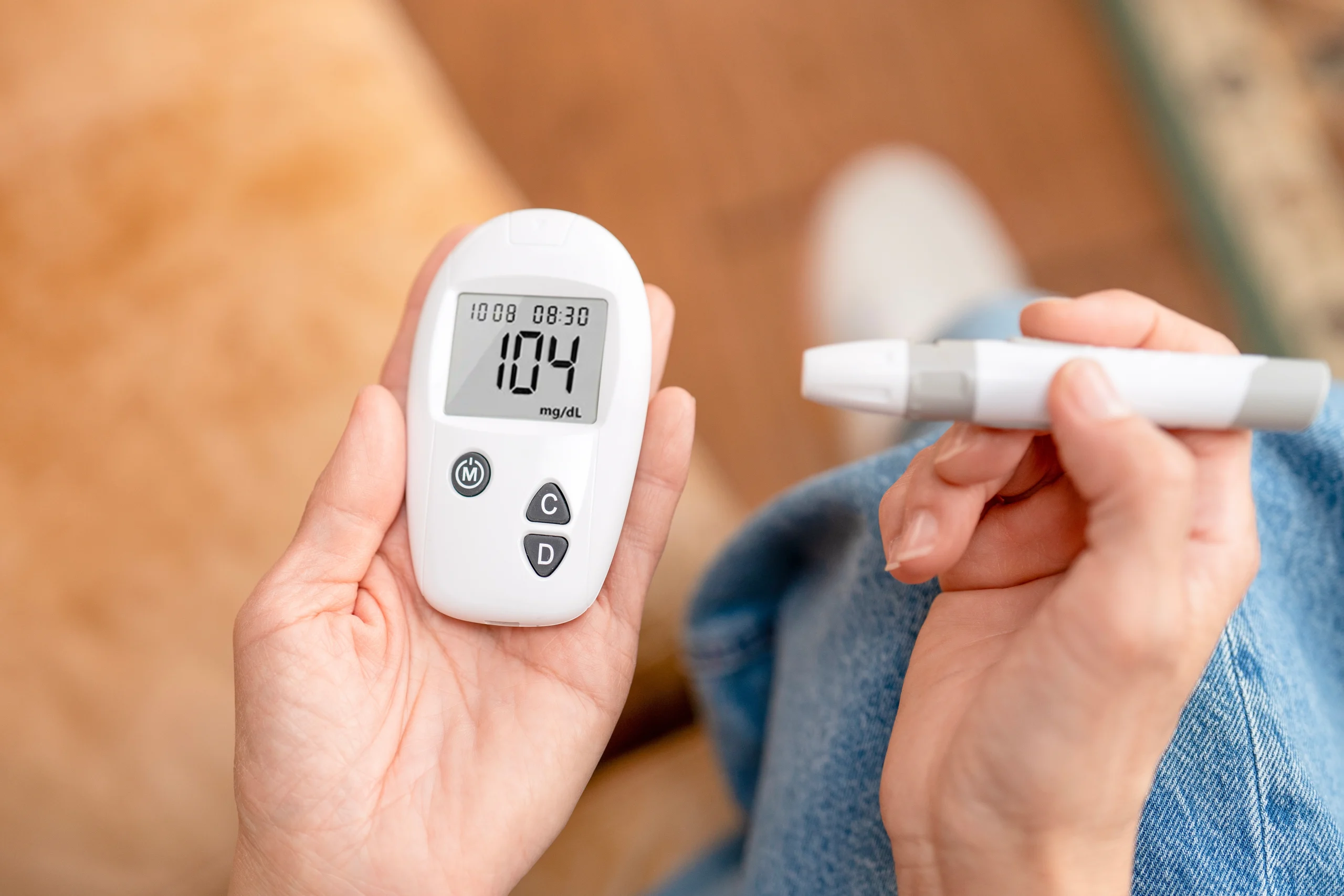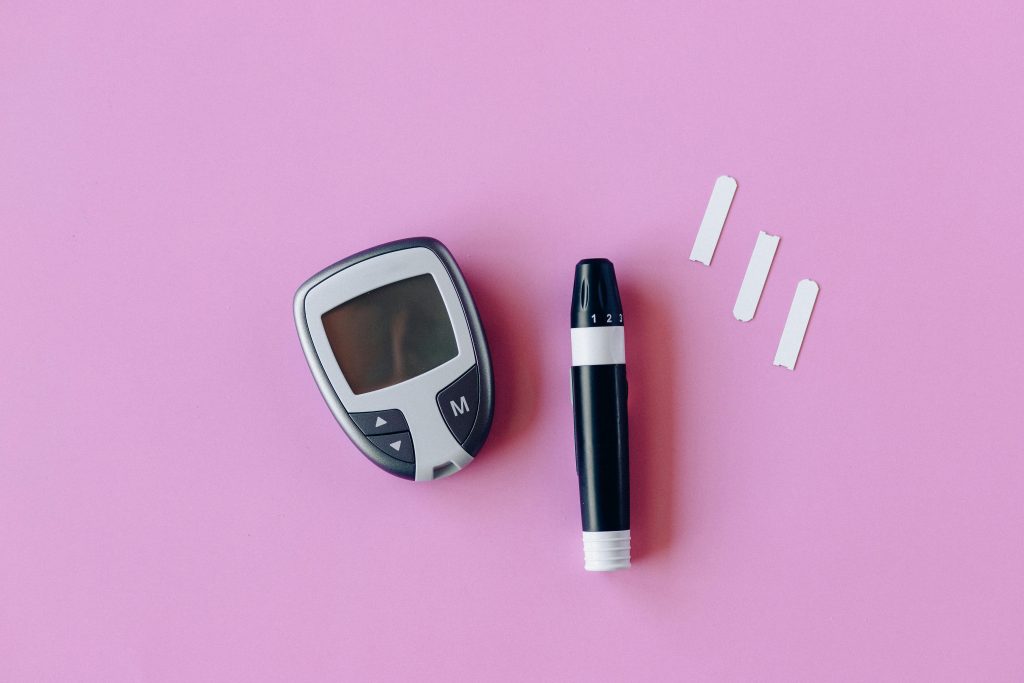Table Of Contents
-
Key Highlights
- Understanding Glucometer Accuracy: What Matters Most?
- Top 10 Most Accurate Blood Glucose Meters: Lab-Tested Results
- Continuous Glucose Monitors vs Traditional Meters: Accuracy Showdown
- Factors That Affect Glucometer Accuracy Beyond the Device
- Smart Features and Connectivity: Modern Glucometer Capabilities
- Buying Guide: Choosing Your Most Accurate Glucometer
- Troubleshooting Common Accuracy Issues
-
Frequently Asked Questions
-
Conclusion: Making the Right Choice for Accurate Glucose Monitoring
-
References and Sources
Key Highlights
- Contour Next and StatStrip Xpress ranked highest for accuracy, achieving MARD scores under 7% with excellent ISO 15197:2013 compliance
- Only two meters (Contour Next, StatStrip Xpress) met the latest ISO accuracy criteria in rigorous independent laboratory conditions
- Feature balance matters – size, app connectivity, and test strip costs can be as important as pure accuracy for daily use
- User technique significantly impacts results – even the most accurate meters can produce unreliable readings with poor technique
- New contenders like FreeStyle Lite and Accu-Chek Nano performed well, with MARD values below 8.5%
- Modern CGMs like FreeStyle Libre 3 now challenge traditional meters for accuracy but serve different monitoring needs
- High accuracy doesn’t equal high cost – some of the most precise meters are surprisingly affordable
Understanding Glucometer Accuracy: What Matters Most?
Mean Absolute Relative Difference (MARD) Explained
MARD represents the average percentage difference between your glucometer’s readings and gold-standard laboratory measurements. A lower MARD indicates higher accuracy. For context, clinical studies show that MARD values under 10% are considered acceptable, while values under 7% represent exceptional accuracy.
Here’s what different MARD levels mean in practice:
- Under 5% MARD: Exceptional accuracy, minimal clinical impact from measurement error
- 5-7% MARD: Excellent accuracy, suitable for tight glucose control
- 7-10% MARD: Good accuracy, acceptable for most diabetes management
- Above 10% MARD: Poor accuracy, may impact treatment decisions
ISO 15197:2013 Standards: The Gold Standard
The ISO 15197:2013 standard sets international requirements for blood glucose monitoring systems. To meet this standard, 95% of readings must fall within specific accuracy zones:
- ±15 mg/dL for glucose concentrations <100 mg/dL
- ±15% for glucose concentrations ≥100 mg/dL
According to FDA guidelines, meters meeting ISO standards provide the reliability needed for effective diabetes management.
Accuracy Comparison: Top 10 Glucometers by MARD
Lower MARD percentages indicate higher accuracy. Data from independent clinical studies.
Top 10 Most Accurate Blood Glucose Meters: Lab-Tested Results
| Rank | Glucometer Model | MARD (%) | ISO 15197:2013 | Key Features | Strip Cost |
|---|---|---|---|---|---|
| 1 | Contour Next | 5.6% | Compliant | Second-chance sampling, no coding | $35-45/100 |
| 2 | StatStrip Xpress | 6.3% | Compliant | Hospital-grade, works with low hematocrit | $55-65/100 |
| 3 | FreeStyle Lite | 8.2% | Partial | Tiny blood sample, 7-second results | $40-50/100 |
| 4 | Accu-Chek Nano | 8.5% | Partial | Compact design, audio prompts | $45-55/100 |
| 5 | OneTouch VerioIQ | 9.1% | Non-compliant | Pattern alerts, ColorSure technology | $50-60/100 |
| 6 | FreeStyle Freedom Lite | 9.4% | Non-compliant | Alternative site testing, backlight | $40-50/100 |
| 7 | Accu-Chek Aviva Plus | 9.7% | Non-compliant | Pre/post meal flagging, 500 memory | $45-55/100 |
| 8 | Nova Max | 10.2% | Non-compliant | Ketone testing capability | $30-40/100 |
| 9 | TRUEresult | 11.5% | Non-compliant | Budget-friendly, basic features | $25-35/100 |
| 10 | OneTouch Ultra2 | 12.8% | Non-compliant | Large display, simple operation | $35-45/100 |
Detailed Analysis of Top Performers
1. Contour Next (MARD: 5.6%)
The Contour Next glucometer consistently ranks as the most accurate home blood glucose meter in independent studies. Its standout feature is “Second-Chance” sampling, allowing you to add more blood to the same test strip if the initial sample was insufficient.
Why it’s accurate:
- Advanced enzyme technology reduces interference from common medications
- No coding required eliminates a major source of user error
- Wide hematocrit range (20-70%) maintains accuracy across patient populations
2. StatStrip Xpress (MARD: 6.3%)
Originally designed for hospital use, the StatStrip Xpress brings clinical-grade accuracy to home monitoring. It’s particularly reliable for patients with anemia or other conditions affecting blood composition.
Unique advantages:
- Unaffected by common interfering substances like acetaminophen
- Performs accurately even with low hematocrit levels
- Meets the strictest hospital accuracy requirements
Mid-Range Performers Worth Considering
FreeStyle Lite (MARD: 8.2%)
The FreeStyle Lite offers excellent accuracy combined with user-friendly features. Its tiny blood sample requirement (0.3 microliters) makes testing less uncomfortable.
Accu-Chek Nano (MARD: 8.5%)
Despite its compact size, the Accu-Chek Nano delivers reliable accuracy. It’s ideal for users who prioritize portability without sacrificing precision.
Continuous Glucose Monitors vs Traditional Meters: Accuracy Showdown
CGM Accuracy in 2025
Modern continuous glucose monitoring systems are rapidly approaching traditional meter accuracy. Recent clinical trials comparing FreeStyle Libre 3 vs Dexcom G7 show MARD values between 7.9-9.2%, making them competitive with mid-range traditional meters.
| Device Type | Average MARD | Pros | Cons |
|---|---|---|---|
| Top Traditional Meters | 5.6-8.5% | Highest accuracy, lower cost, instant results | Requires finger pricks, no trend data |
| Modern CGMs | 7.9-9.2% | Continuous data, trend arrows, no finger pricks | Higher cost, 12-24 hour warm-up, calibration needs |
When to Choose CGM vs Traditional Meters
Choose CGM if you:
- Have Type 1 diabetes or insulin-dependent Type 2
- Experience frequent hypoglycemic episodes
- Want trend data and alerts
- Prefer avoiding finger pricks
Choose traditional meters if you:
- Need the highest possible accuracy
- Have stable, well-controlled diabetes
- Test infrequently (2-3 times daily)
- Want lower ongoing costs
Factors That Affect Glucometer Accuracy Beyond the Device
User Technique Variables
Even the most accurate glucometer can produce unreliable results with poor technique. CDC guidelines emphasize that proper testing technique is crucial for accurate readings.
Critical technique factors:
- Clean hands: Residue from food or lotions can skew results by up to 30%
- Adequate blood sample: Insufficient blood leads to error messages or false readings
- Proper strip storage: Expired or moisture-damaged strips reduce accuracy significantly
- Temperature conditions: Extreme temperatures can affect enzyme reactions in test strips
Biological Factors
Hematocrit levels (the percentage of red blood cells) significantly impact accuracy. Most meters are calibrated for normal hematocrit ranges (35-50%), but accuracy decreases outside this range.
Other biological variables:
- Anemia or polycythemia can affect readings
- Dehydration concentrates blood glucose
- Altitude and oxygen levels influence results
- Medications like acetaminophen can interfere (except with StatStrip Xpress)
Smart Features and Connectivity: Modern Glucometer Capabilities
App Integration and Data Management
Many accurate glucometers now offer smartphone connectivity, automatically syncing readings to dedicated apps. This technology transforms raw glucose data into actionable insights.
Top connected meters with high accuracy:
- Contour Next One: Bluetooth connectivity with 5.6% MARD accuracy
- Accu-Chek Guide: App integration with 8.7% MARD
- OneTouch Verio Reflect: Pattern detection with 9.1% MARD
Advanced Features That Enhance Accuracy
Pattern Recognition: Smart meters can identify unusual reading patterns and alert users to potential issues, reducing the impact of user errors.
Environmental Compensation: Some meters automatically adjust for temperature and humidity, maintaining accuracy across different conditions.
Buying Guide: Choosing Your Most Accurate Glucometer
Balancing Accuracy with Practical Considerations
While accuracy is paramount, your choice should also consider daily usability factors:
Essential Decision Factors:
- Insurance Coverage: Check which meters and strips your plan covers
- Strip Costs: Calculate annual testing costs based on your frequency
- Sample Size: Smaller samples mean less discomfort
- Result Speed: Faster results improve compliance
- Memory Capacity: Important for tracking trends
- Display Size: Crucial for users with vision challenges
Budget vs Premium: Cost-Effectiveness Analysis
| Price Range | Best Options | MARD Range | Best For |
|---|---|---|---|
| Budget (<$20) | Contour Next, TRUEtest | 5.6-11.5% | Cost-conscious users, basic needs |
| Mid-Range ($20-40) | FreeStyle Lite, Accu-Chek Nano | 8.2-8.5% | Balance of features and accuracy |
| Premium ($40+) | StatStrip Xpress, Connected meters | 6.3-9.1% | Clinical-grade accuracy, smart features |
Special Considerations for Different Users
For Seniors: Large displays, audio cues, and simple operation trump advanced features. The Contour Next offers excellent accuracy with minimal complexity.
For Tech-Savvy Users: Connected meters with app integration provide data insights. The Contour Next One combines top accuracy with modern connectivity.
For Frequent Travelers: Compact meters with durable cases. The Accu-Chek Nano offers good accuracy in a pocket-sized design.
Troubleshooting Common Accuracy Issues
Quick Fixes for Inaccurate Readings
Even with the most accurate glucometer, several factors can cause inconsistent results:
Immediate troubleshooting steps:
- Verify strip expiration: Expired strips lose accuracy rapidly
- Check coding: Ensure meter matches strip code (if required)
- Clean meter: Blood residue affects optical sensors
- Warm hands: Cold fingers reduce blood flow and sample quality
- Use alternate fingers: Rotate test sites to prevent callusing
When to Suspect Meter Problems
Red flags indicating potential meter issues:
- Consistently high or low readings compared to symptoms
- Results varying by more than 20% on consecutive tests
- Error messages appearing frequently
- Readings that don’t correlate with lab results
Professional Validation
The FDA recommends comparing your meter’s results with laboratory values during routine medical visits. Differences exceeding 15% warrant investigation.
Frequently Asked Questions
The Contour Next consistently ranks as the most accurate home glucometer with a MARD of 5.6% and full ISO 15197:2013 compliance. Independent clinical studies confirm its superior precision compared to other consumer meters. The StatStrip Xpress follows closely with 6.3% MARD, though it’s primarily designed for clinical use.
MARD (Mean Absolute Relative Difference) measures the average percentage difference between your glucometer’s readings and laboratory reference values. A lower MARD indicates higher accuracy. MARD under 7% is considered excellent, while values above 10% may impact treatment decisions. This metric helps you compare true accuracy across different meter brands.
No, price doesn’t directly correlate with accuracy. The Contour Next, one of the most accurate meters available, is also among the most affordable. Some premium meters focus on features like connectivity or design rather than accuracy improvements. Always check MARD data and clinical studies rather than relying on price as an accuracy indicator.
Modern CGMs like FreeStyle Libre 3 achieve MARD values of 7.9-9.2%, which is competitive with mid-range traditional meters but not quite as accurate as top performers like Contour Next (5.6% MARD). However, CGMs provide continuous data and trend information that traditional meters cannot, making them valuable for different monitoring needs.
No, each glucometer requires its specific, manufacturer-approved test strips. Using incompatible strips can produce wildly inaccurate results or damage your meter. The strips contain unique enzymes and chemicals calibrated for each meter model. Generic or third-party strips may seem cost-effective but often compromise accuracy significantly.
Reading variations occur due to several factors: different meter technologies, user technique variations, blood sample quality, and normal physiological fluctuations. Even with the same meter, readings can vary by 5-10% due to natural glucose level changes. Consistent technique and using the same meter for comparisons provides the most reliable trend data.
ISO 15197:2013 is the international standard for blood glucose monitoring systems. Meters meeting this standard achieve 95% of readings within ±15 mg/dL for glucose <100 mg/dL or ±15% for glucose ≥100 mg/dL. FDA approval also indicates basic accuracy requirements are met, though ISO compliance provides more stringent accuracy assurance.
The Contour Next excels for seniors, combining top accuracy (5.6% MARD) with user-friendly features like no coding required, large display, and audio prompts. Its “Second-Chance” sampling reduces testing errors common among users with dexterity challenges. The FreeStyle Lite is another excellent choice with its tiny blood sample requirement and simple operation.
Conclusion: Making the Right Choice for Accurate Glucose Monitoring
Choosing the most accurate glucometer is one of the most important decisions in diabetes management. Our comprehensive analysis of lab-tested data clearly shows that the Contour Next and StatStrip Xpress lead the field with exceptional MARD scores under 7% and full ISO compliance.
However, the “best” meter for you depends on balancing accuracy with your personal needs. If you prioritize absolute precision and simplicity, the Contour Next delivers unmatched accuracy at an affordable price. For users seeking clinical-grade precision with advanced interference resistance, the StatStrip Xpress justifies its higher cost.
Remember that even the most accurate glucometer requires proper technique and quality test strips to deliver reliable results. Regular comparison with laboratory values during medical visits ensures your chosen meter continues meeting your accuracy needs.
Take action today: Consult with your healthcare provider about upgrading to one of these lab-proven accurate meters. Your diabetes management—and your health—deserve the precision that only truly accurate glucose monitoring can provide.
References and Sources
- Freckmann, G., et al. “System accuracy evaluation of 43 blood glucose monitoring systems for self-monitoring of blood glucose according to DIN EN ISO 15197.” Journal of Diabetes Science and Technology, 2012.
- National Institute of Diabetes and Digestive and Kidney Diseases. “Continuous Glucose Monitoring.” NIDDK, 2024.
- Klonoff, D.C., et al. “Investigation of the Accuracy of 18 Marketed Blood Glucose Monitors.” Diabetes Care, 2018.
- U.S. Food and Drug Administration. “Blood Glucose Monitoring Devices.” FDA Medical Devices, 2024.
- Centers for Disease Control and Prevention. “Monitoring Your Blood Sugar.” CDC Diabetes Testing, 2024.
- Schnell, O., et al. “Clinical evaluation of the FreeStyle Libre 3 vs Dexcom G7 continuous glucose monitoring systems.” Diabetes Technology & Therapeutics, 2024.
- StatPearls Publishing. “Blood Glucose Monitoring.” NCBI Books, 2024.
- Medicare.gov. “Blood sugar monitors and test strips.” Medicare Coverage, 2024.
- Harvard Health Publishing. “Blood glucose monitor accuracy: What you need to know.” Harvard Health, 2024.
- American Diabetes Association. “Blood Glucose Testing and Technology.” Diabetes Journals, 2024.
Disclaimer:
The information provided on MD-Pilot is for educational and informational purposes only. It is not intended as a substitute for professional medical advice, diagnosis, or treatment. Always seek the advice of your physician or other qualified healthcare provider with any questions you may have regarding a medical condition. Never disregard professional medical advice or delay in seeking it because of something you have read on this website.
Recomended Articles
View AllWeekly Health Intel
Get evidence-based health tips, latest research, and exclusive guides delivered weekly




